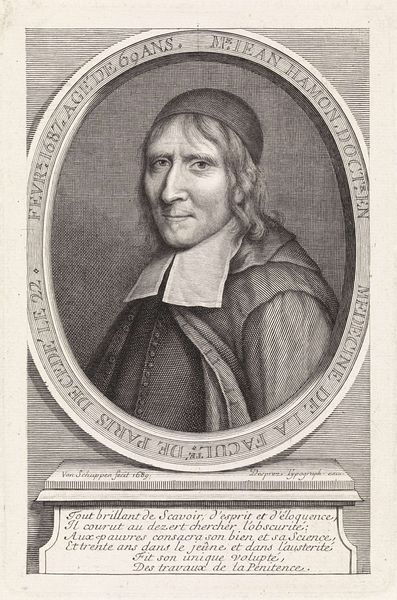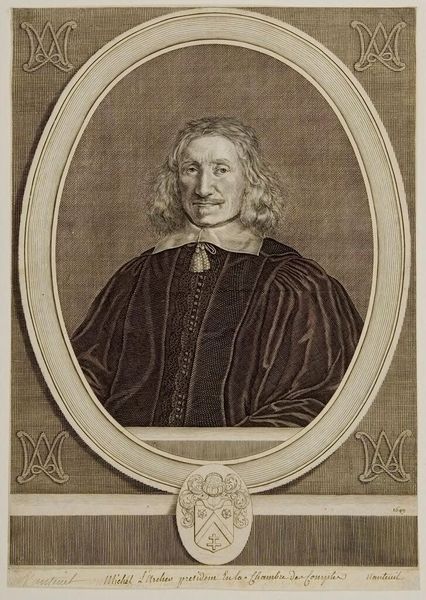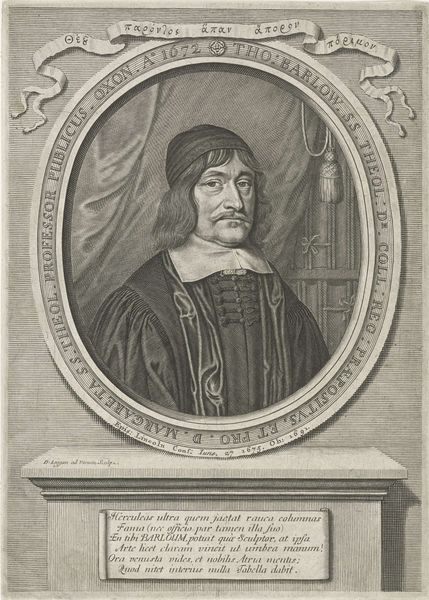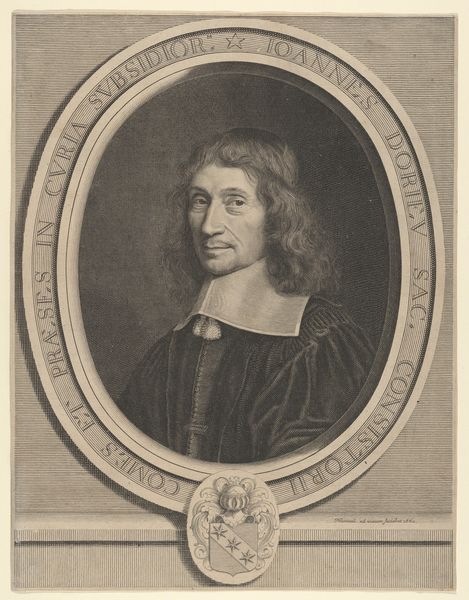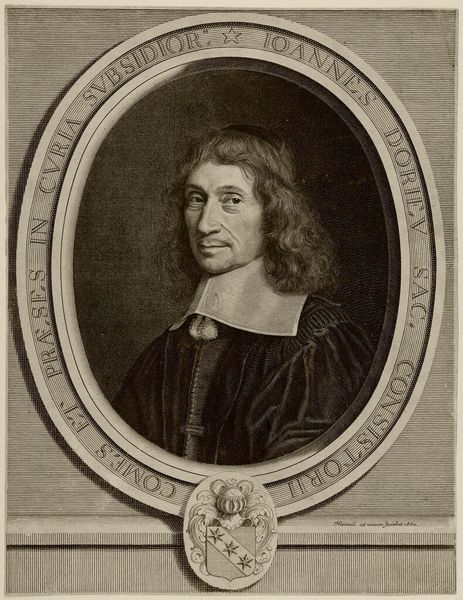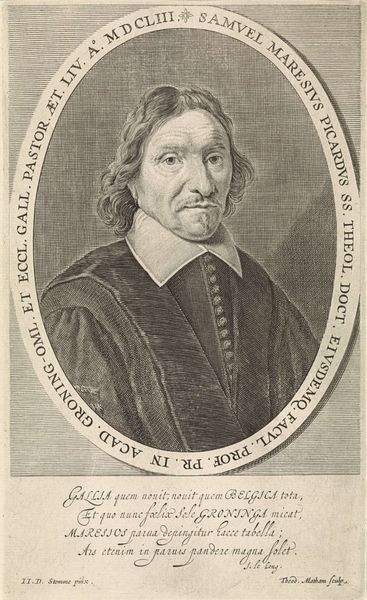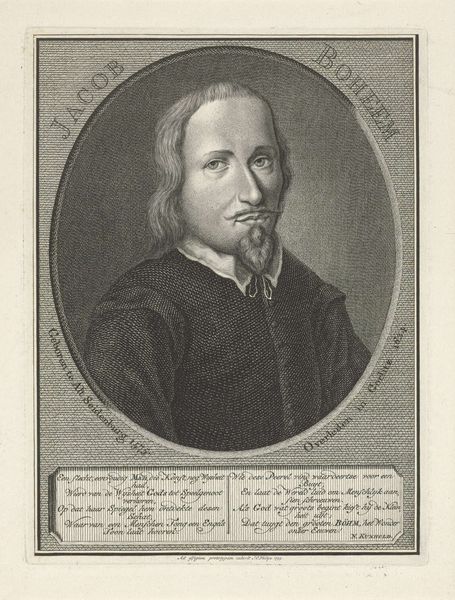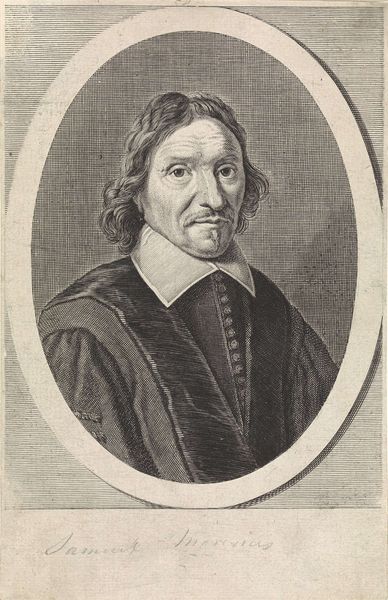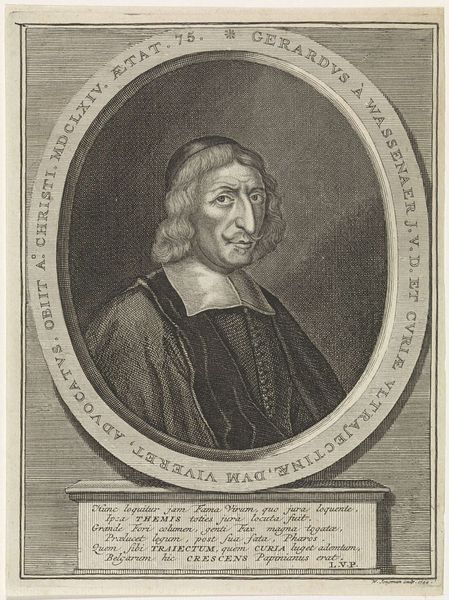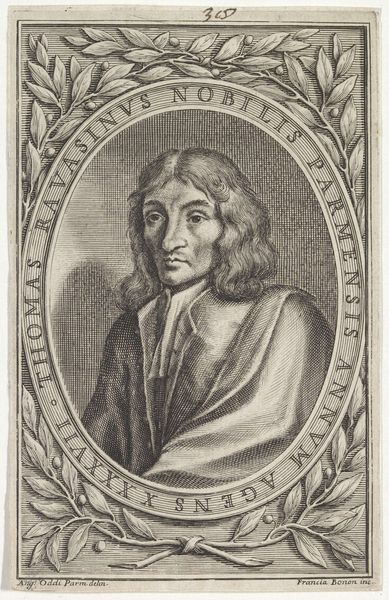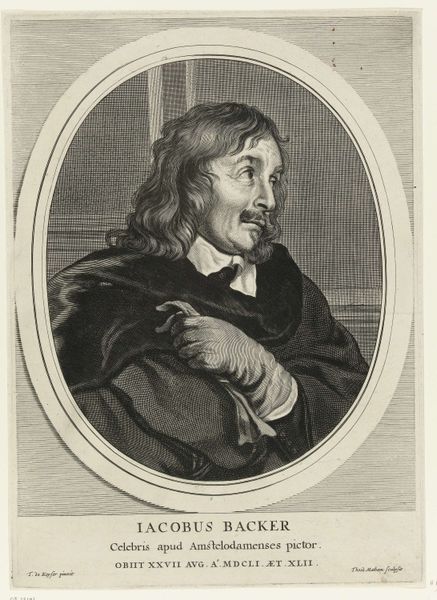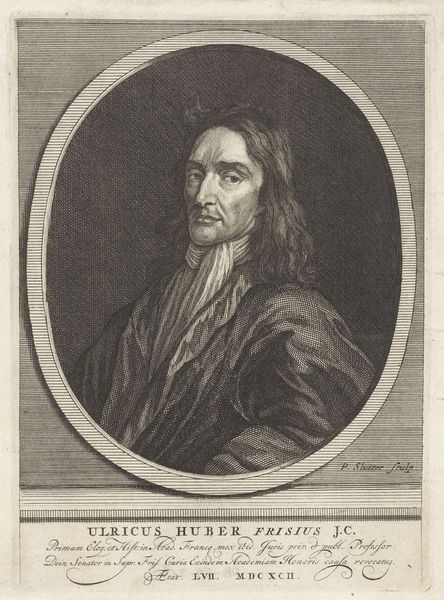
engraving
#
portrait
#
self-portrait
#
baroque
#
dutch-golden-age
#
old engraving style
#
caricature
#
portrait reference
#
line
#
portrait drawing
#
engraving
Dimensions: height 383 mm, width 281 mm
Copyright: Rijks Museum: Open Domain
Curator: This engraving presents a rather somber air, doesn’t it? There’s a gravitas to it. Editor: Yes, and a very tactile quality. You can almost feel the pressure of the engraver's tool on the plate. It looks quite labor-intensive. Curator: Indeed. This is “Portret van Simon Simonides op 46-jarige leeftijd” created by Hendrik Bary. The piece probably dates from around the late 17th or early 18th century and is currently held at the Rijksmuseum. Bary, although his specific social positioning eludes me somewhat, must have had access to this community. It suggests an interesting network. Editor: Engraving, you see, really brought portraiture to a wider audience at that time. Not as exclusive as a painted commission, and it allowed for multiple reproductions. The inscription at the bottom really grounds it; gives you direct access to that context. Curator: Exactly! It is critical for contextualization, telling us, or rather reminding a contemporaneous audience of, Simonides’ importance and status within his community as an economist. This framing would invite conversations around civic duty, theology and economic models available at that historical juncture. Editor: The choice of line work too seems deliberate. Look how dense the lines are in the shadows, suggesting not just form but also the very real weight of the sitter’s clothing and social position. This speaks to craft, the artisan side of art. Curator: Absolutely. His clothing signifies positionality within his context as an individual of faith during the Dutch Golden Age. And look at the eyes—piercing yet melancholic—what experiences framed the making of the face itself, and consequently the creation of this image? What positionalities do such things occupy, today? Editor: A piece like this really makes you consider the economics of art, too, and how the labor involved is valued, or devalued over time. It begs us to rethink value from our moment today. Curator: Absolutely. Considering its original consumption and circulation against present values prompts complex inquiries into societal frameworks of identity, access, and representation. Editor: This really highlights for me how art's value shifts depending on how we value craft, materiality, and labor. It challenges hierarchies. Curator: I’d argue it's an invitation to question historical hegemonies through the lens of those intersectional perspectives!
Comments
No comments
Be the first to comment and join the conversation on the ultimate creative platform.

